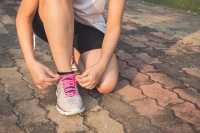Author Interviews, Brain Injury, Exercise - Fitness, JAMA / 17.11.2020
Is It Safe To Fly After a Concussion?
MedicalResearch.com Interview with:
Tara L Sharma DO
Clinical Assistant Professor of Neurology at UWMC
Seattle, WA 98133
MedicalResearch.com: What is the background for this study? What are the main findings?
Response: Flying can lead to reduced oxygen partial pressures and cerebral blood flow causing worsening clinical outcome in cases of moderate to severe TBI; however, not much is known regarding the clinical consequences of flying in individuals with concussion or mild TBI. Because many athletes suffer concussions during games, it is necessary to know if flying afterward may potentially hinder their ability to return to play.
Overall, we found no associated between air travel and increased symptom severity in both our entire cohort and the subset of football players.
(more…)




